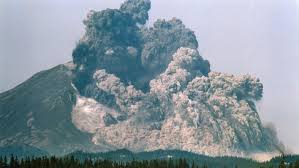The Mount St. Helens major eruption of May 18, 1980 remains the deadliest and most economically destructive volcanic event in U.S. history.[4] Fifty-seven people were killed; 200 homes, 47 bridges, 15 miles (24 km) of railways, and 185 miles (298 km) of highway were destroyed.[5] A massive debris avalanche, triggered by a magnitude 5.1 earthquake, caused a lateral eruption[6] that reduced the elevation of the mountain’s summit from 9,677 ft (2,950 m) to 8,363 ft (2,549 m), leaving a 1 mile (1.6 km) wide horseshoe-shaped crater.[7] The debris avalanche was 0.6 cubic miles (2.5 km3) in volume.[8] The 1980 eruption disrupted terrestrial ecosystems near the volcano. By contrast, aquatic ecosystems in the area greatly benefited from the amounts of ash, allowing life to multiply rapidly. Six years after the eruption, most lakes in the area had returned to their normal state.[9]
After its 1980 eruption, the volcano experienced continuous volcanic activity until 2008. Geologists predict that future eruptions will be more destructive, as the configuration of the lava domes requires more pressure to erupt.[10] However, Mount St. Helens is a popular hiking spot and it is climbed year-round. In 1982, the Mount St. Helens National Volcanic Monument was established by President Ronald Reagan and the U.S. Congress.

